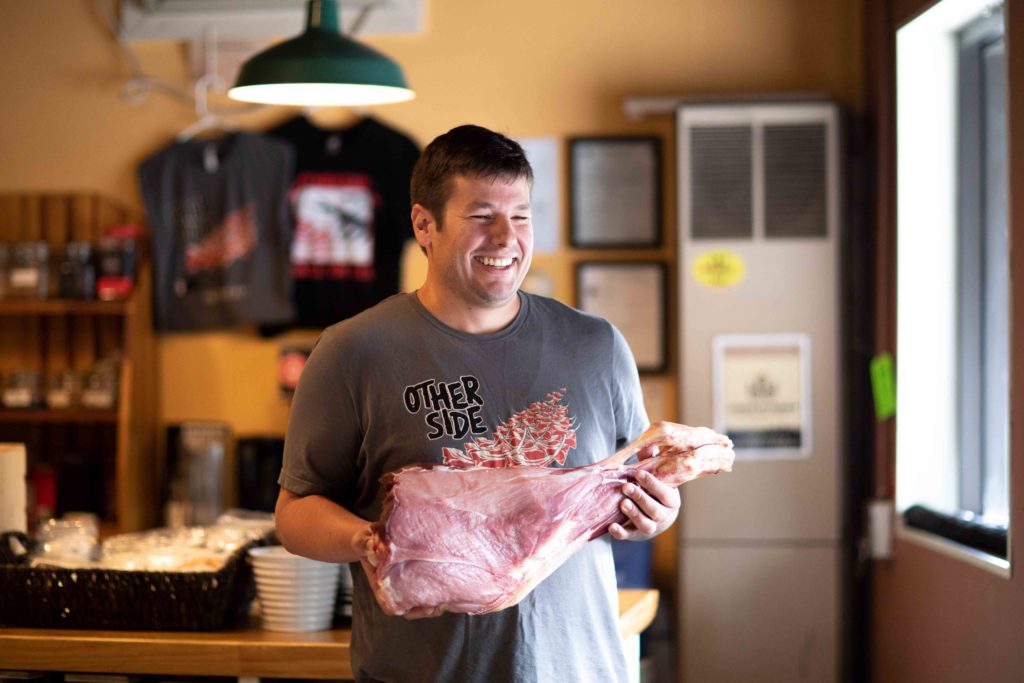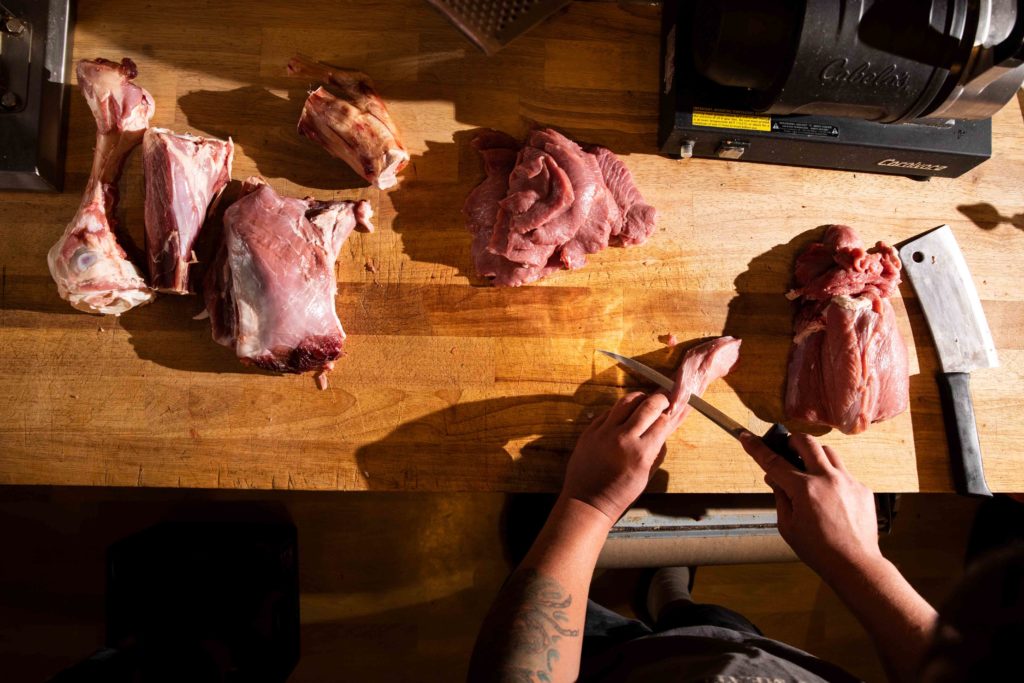Life on the Other Side
At his Portland delis, Pete Sueltenfuss makes great roast beef and time for family

The first chapter of Pete Sueltenfuss’s culinary career was spent putting in long hours at hotspots such as Davio’s and Eastern Standard in Boston, and Fore Street, Miyake, and Grace in Portland. But after marrying his wife, Jessica, also a restaurant industry veteran, and welcoming their first child, Sueltenfuss wanted to figure out how to continue doing the work he loves, which is mostly making charcuterie, instead of keeping late nights in restaurant kitchens. He and Jessica opened their first Other Side Delicatessen on Veranda Street in early 2015. A West End location followed two years later, and in response to neighborhood demand, they opened Other Side Diner last April.
Q. How is Other Side Delicatessen different from what most people think of as a deli?
A. Our specialty is what’s referred to in the business as value-added processing. We’re not bringing in as much whole animal as was originally written down in the business plan, because we sometimes sell 150 pounds of brisket a week in pastrami and corned beef. So we buy the whole muscle, the brisket, and we trim it out and brine it, season it, and smoke it. The same thing with the pork shoulders that we grind for sausages: we bring in what I know is going to be marbled well and have the fat content we’re looking for, and we grind it and season it. We buy from the Maine Family Farms Meat Company, which is like a co-op in that they source meat from different farms around the state. We know there are no antibiotics, no hormones, and that the animal was treated well. Our Veranda Street store was Quattrucci’s for 30 years–Maine Italian sandwiches, convenience store, cigarettes, lottery, all that stuff. We’ve been there five years, and we still have people who walk through the door looking for cigarettes. I’m like, “Look around. Would you be happy here if you could get cigarettes and a pound of roast beef?” I mean…

Q. You were a successful restaurant chef; why did you give that up?
A. I left Grace needing a break from the restaurant business. But I did not intend to open a sandwich shop. The original idea was to open one of Maine’s first USDA processing facilities for salumi, soppressata, and other specialty products, all based on Maine farm-raised animals. The funding had been generated to get us off the ground, and everything was in place. But the guy who owned the building I was going to rent in Gardiner was involved in a lawsuit with his business partner, who had filed for bankruptcy. So that deal was off. My wife, Jess, was just getting back into working a little bit after having our first child, Nick, six months earlier, and I had no job. The groundwork was laid for me opening my own place; I just needed to be patient and figure out how to get through the next period of time before that could happen. I ended up getting a job at Rosemont Market on Brighton and learning production butchery. I had never worked retail before, and I fell in love with it. When I was a chef, I was in the back of the house trying to convince the customer through a server that this is the best $45 steak they’ve ever had in their life, whereas in retail, I’m showing you what kind of steak it is, I’m talking to you about the anatomy of it, why it’s going to cook a certain way—now you go home and cook it. It’s a lot of fun for me to still get to talk about food all the time and have my hands in it, but then I hand it off to the customer.

Q. How did you learn about meat butchering and making charcuterie?
A. From the time I was in my early 20s, if there was a way that I could figure out how to make something myself, I wanted to do it. I started my career in Boston at Davio’s when it was still on Newbury Street, which was the highest-end Italian restaurant in town, and they didn’t make their own pasta. So I’d go home and figure out how to make it. That led to sausage making; through reading and research I learned how to cure, and I worked for people who were always very supportive of my trying things. And then I started working for Jamie [Bissonnette]—obviously charcuterie is his thing, and he became somewhat of a mentor to me. We moved to Maine, I showed Fore Street what I was capable of, and they made me into the charcuterie department—another guy and I were responsible for processing the whole animals we got in and creating the charcuterie boards that came out of the garde-manger station. They gave me carte blanche: “As long as it’s good and you’re using all the product, do what you do and figure it out from there.” It gave me a great opportunity to work with some farmers that I’d never met before and see what would sell in Portland and what wouldn’t.
Q. Why did you decide to open Other Side Diner?
A. Over the past five years of getting to know the neighborhood, there had always been this lament about Steve and Renee’s Diner [which closed in 2014]. People missed it and wanted something like it back. We were having trouble getting our landlord to fix some things at Veranda Street, and when the diner space became available we thought we might move the deli there. Ultimately the landlord stepped up to the plate and fixed what needed to be fixed, but we had already started talking with the diner landlord, and he said, “We want you in here; what would you do?” I said if we were going to do anything, it would be a diner; he was psyched, and it just kind of happened. Jess was happy at her job in wine sales, the delis were doing great, but we were pulled indifferent directions, especially with the kids. Ultimately it helped us to focus and make Jess part of the company—she runs the diner—and keep everything in these few blocks.

